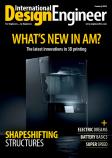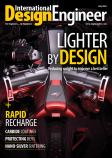The Energy Independence and Security Act (EISA) of 2007, comes into effect on 19th December this year throughout the USA. Canada is also adopting such legislation and that will go into effect on the 1st January 2011.
The act will replace the EPAct legislation which has been in force since 1997 and covers low voltage, "General Purpose" 3 phase electric motors from 1-200HP (0.75-150kW). It will enforce a rise in the minimum efficiency of these machines from NEMA Energy Efficient to NEMA Premium Efficient.
The new law will go further as it also encompasses motors not previously within the EPAct scope. In short, almost all low voltage, 3-phase electrical induction motors will be covered by this new legislation, summarised as follows:
1. 1-200 HP General Purpose motors currently covered by EPAct will change from NEMA Energy Efficient to NEMA Premium Efficient.
2. 1-200 HP motors not covered in point 1 above will comply with NEMA Energy Efficient.
3. 201-500 HP motors will comply with NEMA Energy Efficient.
It is also very important to understand that the new EISA legislation is very broad in its coverage (contrary to the EU's new legislation), as it encompasses virtually all types of low voltage, 3-phase motor such as Explosion proof; Severe Duty; Vertical duty; 2-, 4-, 6- and 8-pole; Brake motors; all mounting types and any frame type, NEMA or IEC metric. So what does this mean to OEM Exporters?
By the end of this year, almost all low voltage, 3-phase electric motors exported to the US and Canada will be subject to new legislation. Therefore, it would be wise to be ready for this and review any machinery designs that incorporate such motors as soon as possible.
Higher efficiency motors do have many different characteristics when compared to their lower efficient counterparts such as:
- Lower full load current rating.
- Higher inrush on line starts.
- Possible larger frame sizes for low power motors (not NEMA frames).
- Possible smaller frame sizes for higher power motors (not NEMA frames).
- Different starting, pull out and breakdown torque levels.
- Cooler running, less heat to dissipate.
These and other possible design issues will need to be considered by the OEM in their machinery designs. Other design considerations of the new legislation include:
- EISA requires that any custom motors included in OEM equipment that fall within the guidelines of the act will comply with the efficiency levels for that type of motor. Each original equipment manufacturer should prepare for the changes well before December of 2010 and develop designs promptly, particularly when UL or CSA approvals are required.
- EISA makes no distinction for duty cycle rating.
- The US DOE (Department of Energy) considers motors built to IEC metric frame dimensions that are equivalent to NEMA T-frame dimension (IEC 90 frames and larger), to fall under EISA.
- EISA makes no distinction between stock or custom motors.
- EISA applies equally to motors manufactured outside of the United States and imported for use. This also includes the electric motors 'as a component of another piece of equipment'.
- EISA requires that an electric motor's nameplate include the nominal full-load efficiency for that motor rating.
- The U.S. Department of Energy has issued a notice of enforcement and are preparing to test motors for compliance.
Failure to comply with the EISA legislation may lead to costly problems in getting machinery into the country.
Policing in the case of the USA - and most likely Canada - will be at two levels, port of entry customs officials and installation inspection and approvals. Failure to comply will result in rejection of the entire machinery, possible fines and prohibition of future sales into the US market.
What help is available? Your motor supplier should be able to offer help, but independent help is available from the NEMA and ACEEE sites: NEMA Premium Motors and the American Council for an Energy Efficient Economy (ACEEE), motors site.
Enter √ at www.engineerlive.com/ede
Robin C H Cowley Industrial Marketing Manager - Europe, Baldor UK Ltd, Bristol, UK. www.baldor.co.uk, www.nema.org/gov/energy/efficiency/premium/index.cfm, http://aceee.org/motors/prmtrs.htm


















